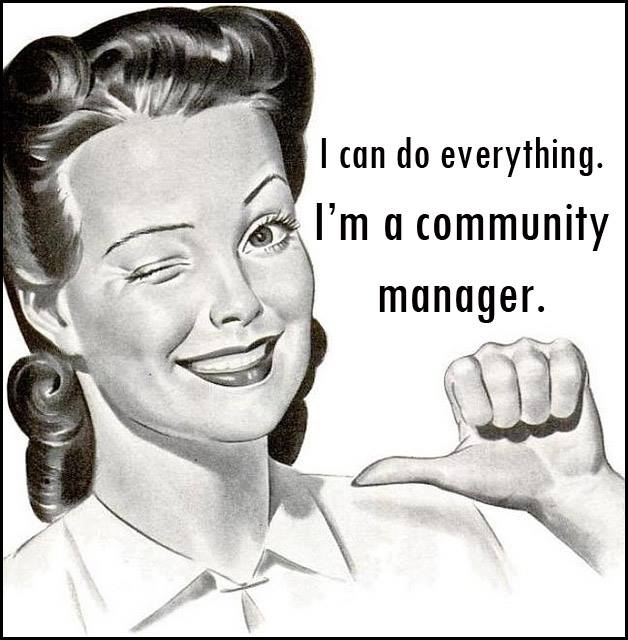By now, you likely know that collaboration between marketing and sales is necessary to achieve and exceed growth goals. What you might not know is that without that unified approach, companies can lose 10 percent of revenue each year. For most businesses, the challenge is figuring out how to make interdepartmental teamwork effective. Organizations must begin with an equal playing field, where sales and marketing both receive support from upper management. Currently, that is not the case in many organizations. The Association of National Advertisers (ANA) and Business Marketing Association surveyed 237 B2B marketers for greater insights on workplace conditions. Only 42 percent of marketing respondents are consistently included at the senior management table. An eye-opening 37 percent expressed that senior management offered a “strong endorsement” of their efforts. Marketing and sales share a symbiotic relationship. Once leadership acknowledges their interdependence, both departments can work together to bolster growth. Esther Bonardi, Senior Director of Strategic Marketing at Yardi, offers these insights into bringing sales and marketing into a blissful and productive union: Partnership drives growth. “The goal of marketing is ultimately to drive qualified leads that are ‘sales ready,’” begins Bonardi (pictured, right). “Accomplishing this requires a lot of communication between sales and marketing. All too often, it can be hard for one group to gain the attention of the other in order to effectively work together on a strategic plan. A lack of meaningful communication is the greatest obstacle to this success.” The key to purposeful communication is exchanging resources and insights, sharing the same objectives, and consistency. “It is important for sales leaders to put time on their calendars to plan and strategize with their marketing counterparts, and to keep these appointments as if they were appointments with a key client,” says Bonardi....
Skip These Social Media Missteps
Set up for success
You’ve created profiles and set aside ample time to update your social media, but you’re still not getting the traffic and following that you desire. What’s a social media novice to do? Social media has so many moving parts, so many variables, that it may seem impossible to get a grip on what to change when what you’re doing isn’t working. We’re here to help you troubleshoot a few common errors that can sabotage your social media efforts. You never developed a strategy. We skip strategies because they’re tough. They require evaluation and tweaking and reevaluation. It’s a lot easier to just start posting aimlessly and hope for engagement! Unfortunately, that can also be a huge waste of time and effort. Worse, you won’t know where you’re going wrong if you don’t get the engagement that you seek. Take the time to develop a strategy by answering the following questions: Who is my audience? Which platforms does my audience use the most? When are they most likely to check their social media? What message(s) do I want to send about my brand? These questions are just the tip of the iceberg, but they’re a great starting point. You forgot to work smarter, not harder… Posting can be exhausting, which may be why you don’t post as often as you should. Save time by finding a post scheduler for your platforms of choice, such as Buffer or Tailwind. You’ll stay on your Followers’ radars when you share consistently, and they’ll expect to hear from you and share your great content. (Note: when scheduling, you won’t want to share the exact same thing the exact same way on every platform. Native marketing is essential to success!) …or you never learned about smart posting. Scheduling posts is more than loading up the queue with reposts and links. Anyone who takes a look at your wall will notice that the human element missing. That will be a turnoff. Be sure to integrate timely, personalized posts into your schedule. You may also be too me-minded. If all of your posts are about your brand and your products, you’re proving the limit of your worth. Branch out by sharing industry-relevant resources, responding to your followers, and initiating contact with your audience. You only share your content once. What a waste! You need to share your unique content more than once. Let’s say that you’re sharing a blog post. Silver Egg Media recommends: You publish a post directly to the blog Notify your Followers on Twitter using the exact blog post title Tweet about the post again, this time with a relevant variation on the title Tweet about it the next day with an excerpt from the post Tweet the next week with yet another variation on the title The next month with, you guessed it, a different title, or excerpt And then post again a month later This gives your content a shot at reaching out to a broader audience without spamming your Followers with replicas of the same post back-to-back. You forgot to engage. Don’t just post, post, post like a narcissistic maniac. Be sure to respond, inquire, and interact with your audience. Social media requires being sociable (in cyberspace, anyway) so get out there and mingle. You never found your voice. Do your posts feel dry, or like anyone else in your industry could’ve created them? Do you get a bit bored scrolling through your own wall? That’s likely because you took a distant, third-party voice rather than using your own unique voice and style to promote your brand. Did you recently get out of a social media rut? Share which tips and insights worked for...
The Facebook Bridge
Value-Added Content
Pretty much everybody (and their mommas) is on Facebook. With 1.44 billion monthly active users at th end of Q1 2015, you can’t afford to not be on Facebook. But you can’t afford to waste your time on the platform, either. In 2013, Facebook changed its algorithm so that your content will only reach 3– 5 percent of your fans. To reach more people immediately, you must pay. To reach more people organically, you must build a long and reliable bridge to your fans using value-driven content. Value-driven or value-added content is an age-old approach that has received a fresh breath of life in the social realm. In the past, when we were told to add value, we took the request quite literally. We immediately wanted to ask, “How can we make their lives more simple?” “How can we save them money?” We’d offer coupons and discounts. When we became more in-the-know, we’d offer subtle goodies like life hacks. While these tactics are all great in their own right, there are more substantial ways to offer value-driven content while taking advantage of Facebook’s unique social media mega-status. But first, let me tell you a story. Super Bowl 2002. I only watched the game to spend time with my dad. When the half-time ads came on, I prepared to turn off my brain and settle into a bean dip- induced coma, but a certain image caught me by surprise: solemn townsfolk watched as eight Clydesdale horses marched from their perspective towns in America’s heartlands, and then through city streets. The horses stopped upon icy, isolated land overlooking the city of New York. In unison, they bowed to the recently altered skyline. My entire body shook until I burst into tears. My father nodded slowly in...
Crafting Cooler Content...
For multifamily marketing
On April 8, I was a panelist on a multifamily webinar sponsored by Apartments.com and Yardi Systems. Those who dialed in to the event were treated to an hour of insight on the best practices for multifamily content marketing. My section of the presentation focused on content marketing, specifically for multifamily communities. Here are a few of the thoughts I shared: It’s no secret that local newspapers are dying, and that means that people are seeking new sources of information about what’s going on in the community around them – things to do on the weekend, places to eat, and more. That creates a great opportunity for multifamily communities to become providers of that kind of content, and it ends up having two benefits: enhancing your marketing while also adding value for those living at your community. If you can help keep residents’ lives fresh and interesting, you’ll have a loyal customer for a long time. The most common error that I see on multifamily blogs is offering content that isn’t local or community relevant. A post about spring cleaning might seem like a great idea for this time of year, but that has nothing to do with what’s going on around you in your neighborhood. Make it local – that’s the most important thing I can emphasize. What makes good content? Here some ways to find out: Listen to the questions that your residents and prospects ask you. If you live in the community or near the neighborhood, ask yourself what YOU would like to know? Think about the things you notice on the drive or commute to the community. Is there a new business down the street? How about that new pizza place the leasing team tried for lunch that week? Daily...
Corporate Content
Blog Like You Mean It
A corporate blog, when done right, is an inbound marketing machine. In fact, one study by HubSpot discovered that businesses with blogs received 55% more visitors than businesses without blogs. A blog can help both search engines and potential clients get to know, like and trust you. Blog posts that are published get indexed. Indexed pages help your site get found in searches. Popular blog posts are shared, providing social proof and inbound links for your company. Inbound links boost your SEO. Any way you look at it, blogging is good for your business. But how do you go about the business of good blogging? It’s less complicated than you may think. Whether you’re starting from scratch or rebooting an existing blog, here are 4 easy steps that will get you going: Think Before you can set pen to paper or fingers to keyboard, you need to brainstorm potential topics for your blog posts. Take 15 minutes to populate four simple lists: Questions clients frequently ask you Business topics you know a lot about Business topics that interest you, but you don’t know much about Current events in your industry or area Ta-da! You’ve just come up with piles of content for your corporate blog. Keep these lists handy so you can add to them anytime inspiration strikes. Schedule Creating a content schedule for your blog is critical to your success. Consistency is key when it comes to building an online community of readers. First decide how frequently you can realistically post. You should post often enough that your readers look forward to new content, but not so often that your posts become a lot of noise. Once a week is good. Twice a week is better. More or less depends on your business....





